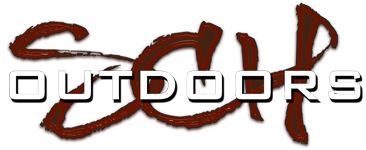Hey Steve take a look at this.
The Department of Fish and Wildlife manages California's diverse fish, wildlife, and plant resources, and the habitats upon which they depend, for their ecological values and for their use and enjoyment by the public.

wildlife.ca.gov
Well I read most of the Land Management Plan (LMP) for San Jac. Couple highlights: (do NOT expect these things immediately, I'm simply providing info what's in the report);
Ref 2-12: "Although aquatic habitats within the Davis Unit are to some extent maintained with recycled water, the supply of recycled water itself may also be affected in the future by increased efforts to maximize water conservation and the use of recycled water within nearby urban communities."
Ref 2-59: Table 2-7: Historic Usage of Recycled water at the Davis Unit: Lowest: 1992: 106.98 acre feet) Highest 2015: 3493.24 Records up to 2016.
Ref 5-35/36: Four new wetland areas are talked about "These four wetlands will provide up to approximately 297 acres of additional wetland habitat (see Section 5.3.2). It is expected that three of these ponds will include blinds for waterfowl hunting and one will be a seasonal closed zone, similar to the Headquarters’ pond."
1. West of Davis Road as you drive in
2. The former Lowell Ponds, East of Davis Road, north of Dog training area
3. North of existing Marsh X
4. North of Marsh V & W (sorry later in the report they indicate these may be 'closed zones')
Ref 5-37: Development of Green Feed Fields "In addition to these open zone waterfowl ponds, a series of green feed fields have been identified for development in order to increase forage for waterfowl and allow opportunities for hunting in a field setting. These new green feed fields could be developed in up to three areas occupying approximately 424 acres: one in D1, directly north of existing reservoir ponds in D4 (approximately 105 acres), one on the northeastern edge of D4 and adjacent to the northern portion of Mystic Lake (approximately 113 acres), and one in fields adjacent to the southwestern portion of Mystic Lake in D11 (approximately 207 acres) (see Section 5.3.2)." (see unit #'s below)

Ref 5-45: "Currently, CDFW funds the purchase of water through Pittmann-Robertson funds. This funding has recently declined; this source, and any future sources, should be evaluated for potential
volatility. Other funding sources for water may need to be used."
Re 5-63: "A day use pass or annual pass is required for non-consumptive users to access SJWA. Those that are exempt must have a valid fishing, hunting or trapping license (Fish and Game Code sections 1528, 1764, and 1765). As of October 3, 2011, visitors must make an advance purchase of a daily CDFW Land pass or an annual Land pass, either online at
www.dfg.ca.gov/licensing or at
one of the CDFW’s 1,500 license agents or license sales offices. After providing proof of a prepaid pass, visitors will be issued a daily entry permit at the SJWA Headquarters Office on Davis Road."
Ref 5-71: "Mystic Lake is currently not managed to allow hunting from non-motorized boats when the lake is full. In the future, the goal is to include access to Mystic Lake for hunting using non-motorized boats."
Ref 5-93: (background from what I read: original water agreement for recycled water usage between CDFW and EMWD (Eastern Municipal Water District) was for 25 years, starting in 1987, every year since agreement has been extended up until 2018) "CDFW and EMWD plan to extend this Agreement each year indefinitely until after the draft LMP is approved, at which time an agreement will be requested that covers a longer time period for the 4,500 acre feet per year of recycled water allocation and CDFW and EMWD will reach agreement on an equitable rate. The new agreement may require additional CEQA review by CDFW. As a way to potentially lower the cost of water CDFW may build a storage pond to potentially purchase water at a lower rate and store it until needed. Any recycled water CDFW anticipates to deliver and store in the proposed future recycled water storage reservoir above the existing 4,500 acrefeet per year identified in the 1987 Agreement would need to be addressed in a new long term agreement and be subject to the availability of future EMWD."
Ref 5-93: "state law requires that hunting only occur in areas at least 150 yards from any dwelling or occupied structure. If development is approved adjacent to the SJWA, a minimum buffer distance of a 150 yards should be provided as part of the private development so that hunting uses within the SJWA are not precluded by the development."
Ref 6-59 Table 6-2: The plan recommends going from 5 permanent positions to 14 and 1 seasonal to 6






